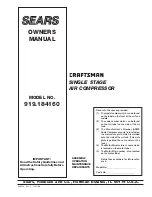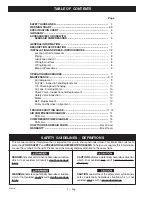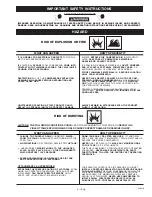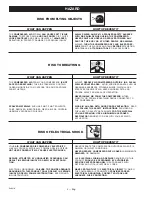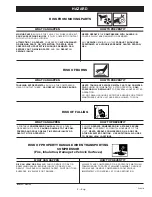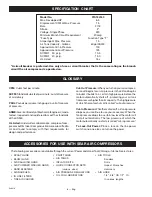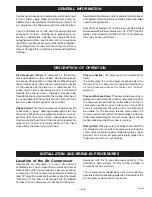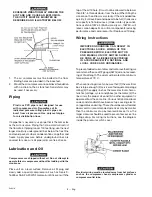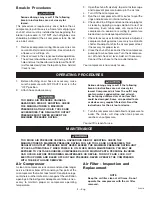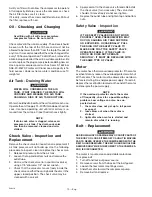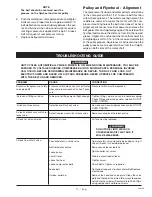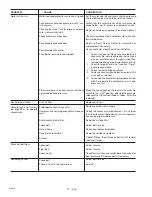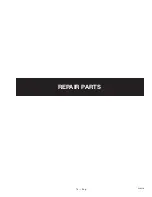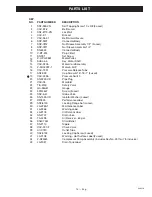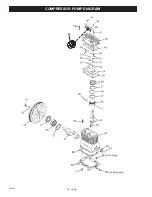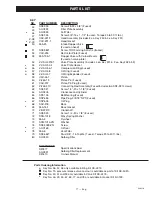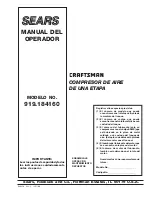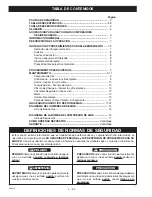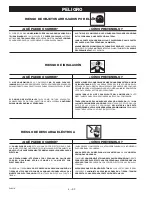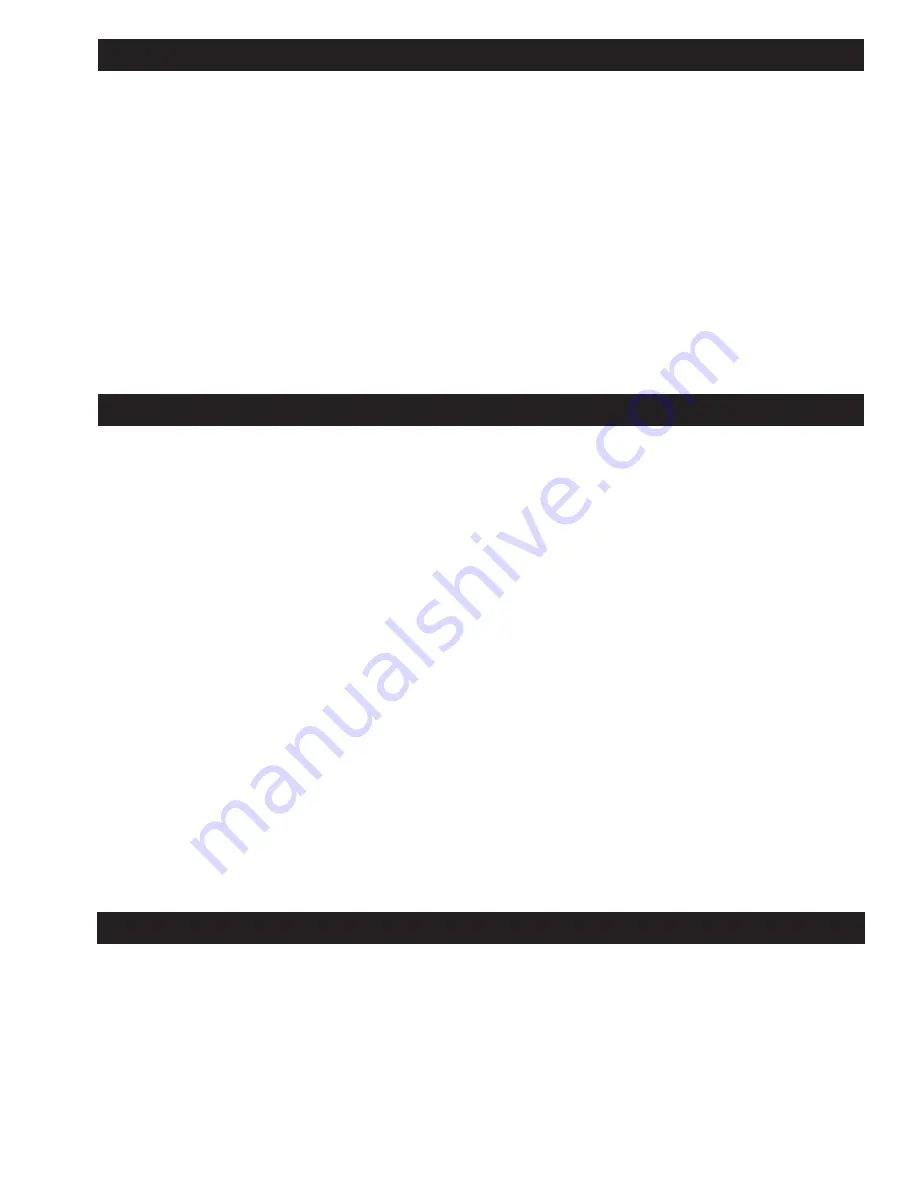
7 — Eng
D20410
You have purchased an air compressor unit consisting of
a two cylinder, single stage air compressor pump, an
ASME air tank, associated controls and instruments. This
air compressor must be permanently mounted in place.
Your air compressor can be used for operating paint
spray guns, air tools, caulking guns, grease guns, air
brushes, sandblasters, inflating tires and plastic toys,
spraying weed killers, insecticides, etc. An air pressure
regulator is usually necessary for most of these applica-
tions. Regulators can be purchased from most Sears
stores or through the current Sears Power and Hand Tool
Catalog.
Separate air transformers which combine the functions of
air regulation and/or moisture and dirt removal should be
used where applicable.
Some form of piping or shut-off valve must be installed
before operating the air compressor. A 1/2" NPT shut-off
globe valve should be installed at the air compressor
tank. Do not use a ball valve.
Location of the Air Compressor
Operate the air compressor in a clean, dry and well
ventilated area. The air intake filter must be kept clear of
obstructions which could reduce air delivery of the air
compressor. The air compressor should be located at
least 12" away from walls or other obstructions that could
interfere with the flow of air through the fan bladed
flywheel. The air compressor crankcase and head are
designed with fins to provide proper cooling. If the
humidity is high, a Sears air filter can be installed to
remove excessive moisture.
The air compressor should be as near to air outlets as
possible in order to avoid long pipe lines. Do not place the
air compressor where heat is excessive.
Pressure Switch:
The pressure switch automatically
starts
the motor when the air tank pressure drops below the
factory set "cut-in" pressure. It stops the motor when the
air tank pressure reaches the factory set "cut-out"
pressure.
Pressure Release Valve:
The pressure release valve is
designed to automatically release compressed air from
the compressor head and the outlet tube when the air
compressor reaches "cut-out" pressure or is shut off. If
the air is not released, the motor will try to start but will
be unable to. The pressure release valve allows the
motor to restart freely. When the motor stops running, air
will be heard escaping for a few seconds. No air should
be heard leaking when the motor is running.
Safety Valve:
If the pressure switch does not shut off the
air compressor at or near its cut-out pressure setting, the
safety valve will protect against high pressure by "pop-
ping out" at its factory set pressure (slightly higher than
the pressure switch cut-out setting).
Air Compressor Pump:
To compress air, the pistons
move up and down in the cylinders. On the downstroke,
air is drawn in through the air intake filter and then through
the air intake valves. The exhaust valve remains closed.
On the upstroke of the piston, air is compressed. The
intake valves close and compressed air is forced out
through the exhaust valves, through the outlet tube,
through the check valve and into the air tank. Working air
is not available until the compressor has raised air tank
pressure above that required at the air outlet.
Check Valve:
When the air compressor is operating, the
check valve is "open," allowing compressed air to enter
the air tank. When the air compressor reaches "cut-out"
pressure, the check valve "closes," allowing air pressure
to remain inside the air tank. If the air is not unloaded, the
motor will try to start, but will be unable to. The check
valve allows the motor to re-start freely.
GENERAL INFORMATION
DESCRIPTION OF OPERATION
INSTALLATION AND BREAK-IN PROCEDURES

